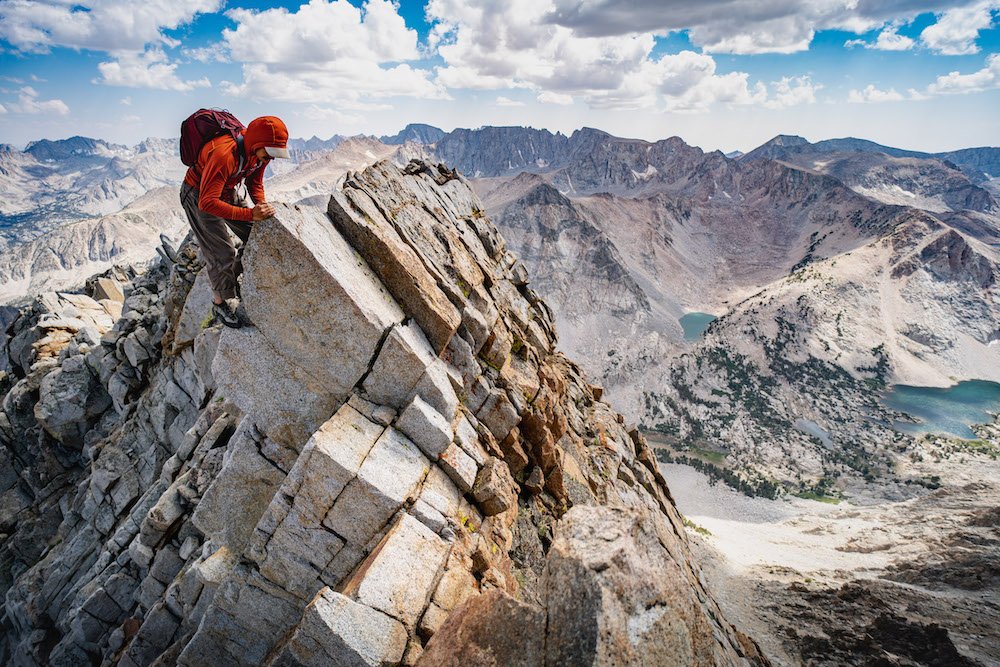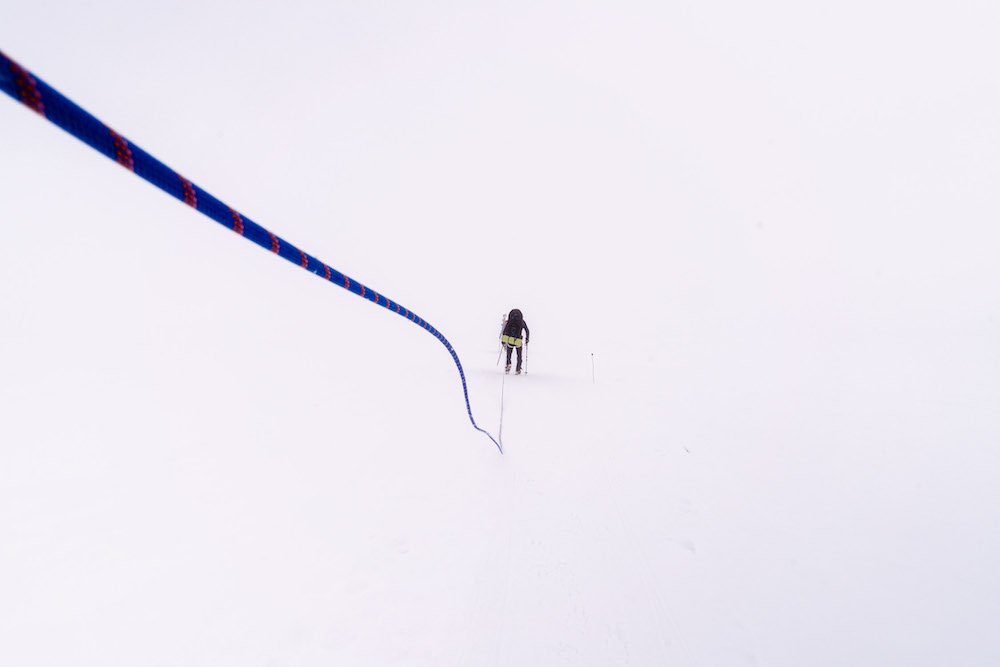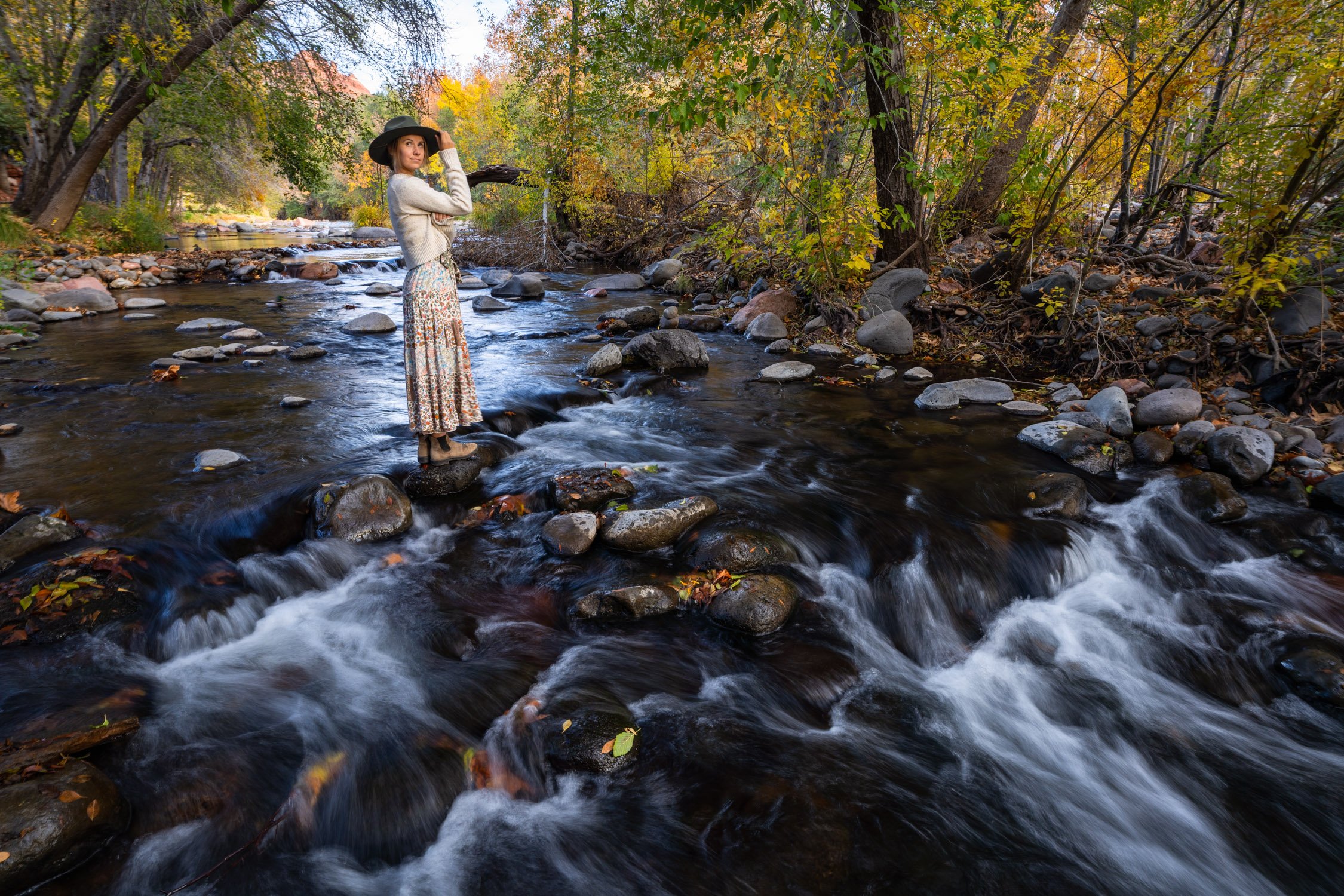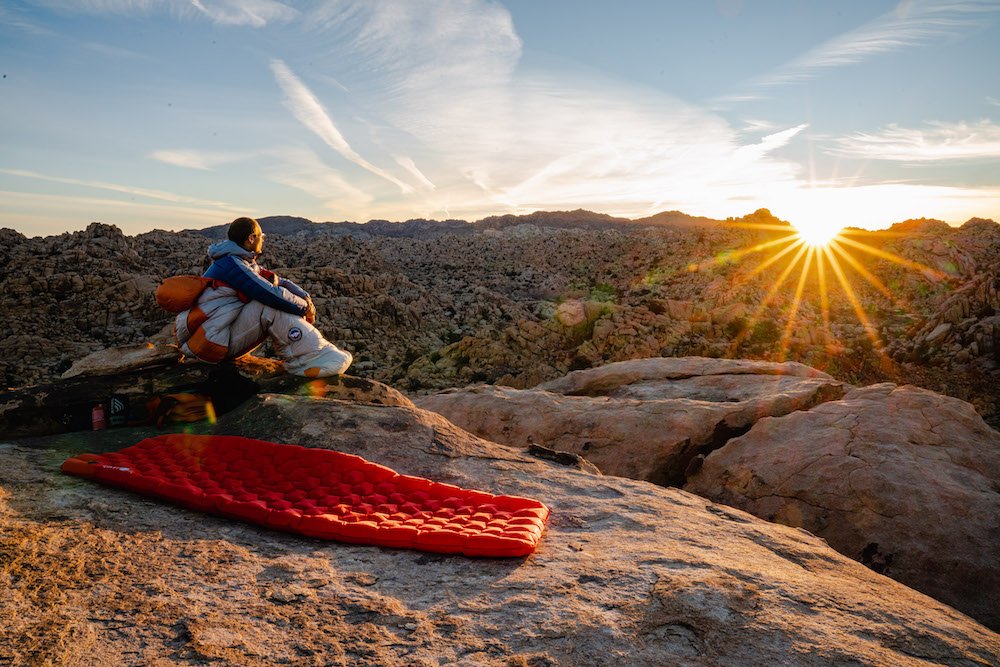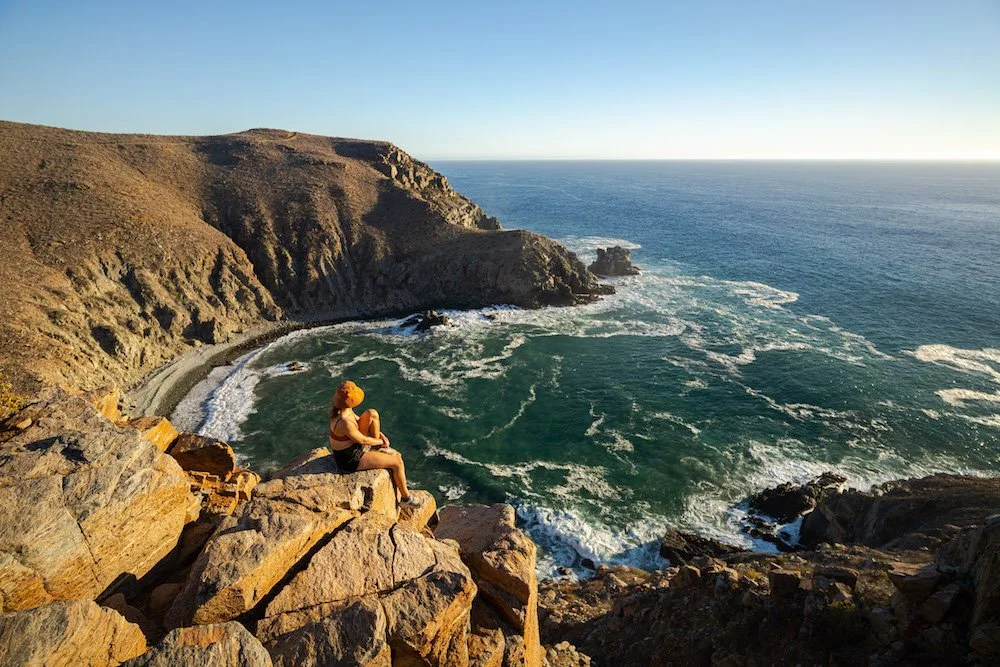There Are So Many Types of Climbing, Here They Are So You Don’t Feel Foolish Like Me
When I first started rock climbing, I assumed it was just about scrambling up rocks for fun. It wasn’t until I had been climbing for a while that I realized how many types of climbing exist. Over the past ten years, I’ve tried almost all of them (except ice climbing, which still intimidates me). Each type has unique challenges and joys, and I’ve grown to love them all for different reasons. Let me break them down so you can avoid the confusion I faced as a beginner rock climber.
Free soloing on some easy terrain in the High Sierra of California. Photo by Dalton Johnson
Free Soloing
Free soloing gained fame thanks to Alex Honnold and the documentary Free Solo. This style involves climbing without ropes or safety gear—just you and the rock. It’s dangerous and not something I recommend for most people. I’ve dabbled in free soloing on very easy terrain while climbing mountains, but only because I know my limits. The precision and mental focus required make it a form of climbing that appeals to purists, but the risks can never be overstated. If you’re drawn to the idea, proceed with extreme caution and a deep understanding of your abilities. The mental discipline and deep connection to the rock that free soloing provides are unmatched, but the stakes are as high as they come.
Bouldering in the Buttermilks of Bishop, CA. Photo by Dalton Johnson
Bouldering
Bouldering is one of the simplest forms of climbing. All you need are climbing shoes and a crash pad. It’s focused on short, powerful routes close to the ground, known as "problems." My favorite bouldering spot is the Buttermilks in Bishop, California. These granite boulders are stunning and challenging, offering a perfect mix of fun and frustration. Bouldering allows for creative problem-solving and explosive strength, making it a great choice for those who enjoy a quick, intense workout. Plus, the social aspect of bouldering—working on problems alongside other climbers—is unbeatable. The community that forms around shared challenges makes bouldering a welcoming entry point into the climbing world.
Free Climbing
This term often confuses beginners. Free climbing doesn’t mean climbing without a rope; it means using only your hands and feet to ascend. Ropes are there for safety, not to help you climb. Free climbing includes bouldering, sport climbing, trad climbing, and more—it’s the opposite of aid climbing. This broad category emphasizes personal skill and physical ability, making it the backbone of modern climbing. Whether you’re scaling a short boulder or a towering cliff, free climbing showcases the purest form of human movement on rock. The distinction between free climbing and other styles often confounds beginners, but understanding it is key to appreciating the diversity of climbing disciplines.
Adrian trying hard on an iconic line in Pine Creek, CA. Photo by Dalton Johnson
Sport Climbing
Sport climbing involves clipping quickdraws into pre-placed bolts as you climb. It’s straightforward and a great way to get comfortable on a rope. Most people start with sport climbing in gyms before transitioning outdoors. While it’s not my favorite style (I’m not the strongest climber), it’s undeniably fun and accessible. Sport climbing emphasizes dynamic movement and technical precision, with routes often graded for difficulty and requiring a mix of endurance and strength. Many iconic climbing destinations, like Spain’s El Chorro or France’s Verdon Gorge, are sport climbing paradises. It’s a style that rewards consistency and training, making it an excellent challenge for climbers looking to push their physical limits.
Traditional climbing on a multi-pitch route in Yosemite National Park. Photo by Dalton Johnson
Trad Climbing
Short for “traditional climbing,” this style involves placing your own gear like cams and nuts into cracks to protect yourself. People often associate trad climbing with crack climbing and an “old-school” vibe. I love the adventure it offers—there’s something magical about feeling like you’re on a quest as you climb. Trad climbing routes often weave through dramatic landscapes, leading climbers into remote and awe-inspiring environments. The technical skill required to place gear properly adds an intellectual element to the sport, making it as much about problem-solving as physical effort. The interplay of precision, strategy, and exploration makes trad climbing a deeply rewarding experience.
Racking up for a day of climbing on the Grand Teton. Photo by Dalton Johnson
Alpine Rock Climbing
This might be my favorite type of climbing. Alpine rock climbing combines technical rock climbing with mountain exploration, often requiring snow crossings or glacier travel. My first alpine rock climb was the Grand Teton, and I’ve been hooked ever since. The combination of breathtaking scenery and climbing makes this style unforgettable. It’s about more than just the climb; it’s about the entire experience of being in the mountains. From dawn starts to navigating changing weather, alpine rock climbing offers a blend of adventure and serenity that’s hard to match. The unique challenges of high-altitude environments make each climb a test of resilience and adaptability.
Alpine Climbing
Alpine climbing takes things a step further. It combines rock climbing, ice climbing, and glacier travel. This style demands extensive skills and gear. It’s challenging but rewarding, often requiring years of experience and a reliable partner. If you’re drawn to big mountain objectives, this might be your calling. Routes like the Matterhorn or Alaska’s Denali test a climber’s endurance, resilience, and resourcefulness. Alpine climbing is as much about mental toughness as physical skill, with success often hinging on split-second decisions in high-stakes environments. The sheer scale of alpine climbs makes every success feel monumental.
Big Wall Climbing
Big wall climbing is about tackling enormous rock faces—usually over 1,500 feet tall—that require multi-day efforts. Climbers sleep on portaledges suspended from the wall. It’s a mental and physical challenge, but the views (and the sense of accomplishment) are unmatched. Iconic big walls like Yosemite’s El Capitan have become rites of passage for climbers worldwide. The combination of technical skill, logistical planning, and sheer determination needed to complete a big wall route makes it one of the most rewarding climbing styles. Each move on a big wall feels consequential, adding a thrilling intensity to every ascent.
Aid climbing the last few pitches of the nose on El Capitan in Yosemite National Park. Photo by Dalton Johnson
Aid Climbing
Aid climbing involves using gear like pitons, ladders, and bolts to assist your ascent. While it’s not as popular today, it’s the foundation of American big wall climbing. Clean aid climbing, which avoids damaging the rock, is a modern evolution of this style. Aid climbing can also serve as a stepping stone for those looking to tackle routes beyond their free-climbing ability, providing an alternative way to reach challenging summits. The meticulous placement of gear and deliberate pace make aid climbing a unique test of patience and precision. Aid routes often blend ingenuity with physical effort, creating a style all its own.
Ice Climbing
I haven’t tried ice climbing yet—it’s a bit intimidating. Climbing frozen waterfalls and icy cliffs requires specialized gear like ice axes and crampons. While I admire those who do it, I’ve been content to enjoy it from afar for now. Ice climbing’s dramatic visuals and inherent risk create a captivating allure, drawing climbers who seek to test themselves against nature’s most unforgiving elements. It’s a sport where preparation and precision are paramount, with even small mistakes carrying significant consequences. Every icy ascent tells a story of determination and calculated risk.
Gym Climbing
Gym climbing is where most people start. It’s safe, social, and a great place to build strength and technique. While gym grades don’t always translate to outdoor climbing, the skills you develop indoors are invaluable for transitioning to real rock. The controlled environment allows for experimentation and growth, making it ideal for beginners and seasoned climbers alike. Many gyms now offer a variety of climbing styles, from bouldering walls to lead routes, ensuring something for everyone. Gym climbing also fosters a vibrant community that often serves as a gateway to outdoor adventures.
Roped up while traversing a glacier on Denali. Photo by Dalton Johnson
Mountaineering
Mountaineering involves climbing snow-covered mountains, often with glaciers or steep snow slopes. It’s less about technical rock climbing and more about endurance, navigation, and teamwork. Famous routes include the Seven Summits, but even smaller objectives can be rewarding. Mountaineering offers a profound connection to the natural world, requiring climbers to adapt to constantly changing conditions. The mix of physical challenge and breathtaking vistas makes mountaineering an unforgettable pursuit for those willing to embrace its demands. Every mountaineering expedition feels like a journey into the heart of the wilderness.
Peak Bagging
Peak bagging is like mountaineering’s simpler cousin. It’s mostly hiking with occasional use of climbing gear. The goal is to summit a peak, whether it’s a 14er in Colorado or a smaller mountain in your local range. It’s a great way to experience the outdoors without the technical demands of climbing. Peak bagging appeals to adventurers of all levels, offering a sense of accomplishment and a chance to explore stunning landscapes. Popular peak-bagging challenges, like the Adirondack 46ers, provide ongoing inspiration for those who love to check off goals. For many, the pursuit of summits becomes a lifelong passion.
Kristin bagging the summit of Mount of the Holy Cross, a Colorado 14er. Photo by Dalton Johnson
Climbing is so much more than scaling rocks. Each style offers unique challenges and joys, from the simplicity of bouldering to the epic adventures of alpine climbing. If you’re just starting, try a few styles to see what resonates with you. You might be surprised by what you fall in love with—I know I was. The world of climbing is vast and varied, ensuring there’s something for everyone, no matter your interests or skill level. With each ascent, you’ll discover new strengths, perspectives, and an enduring connection to the vertical world.


